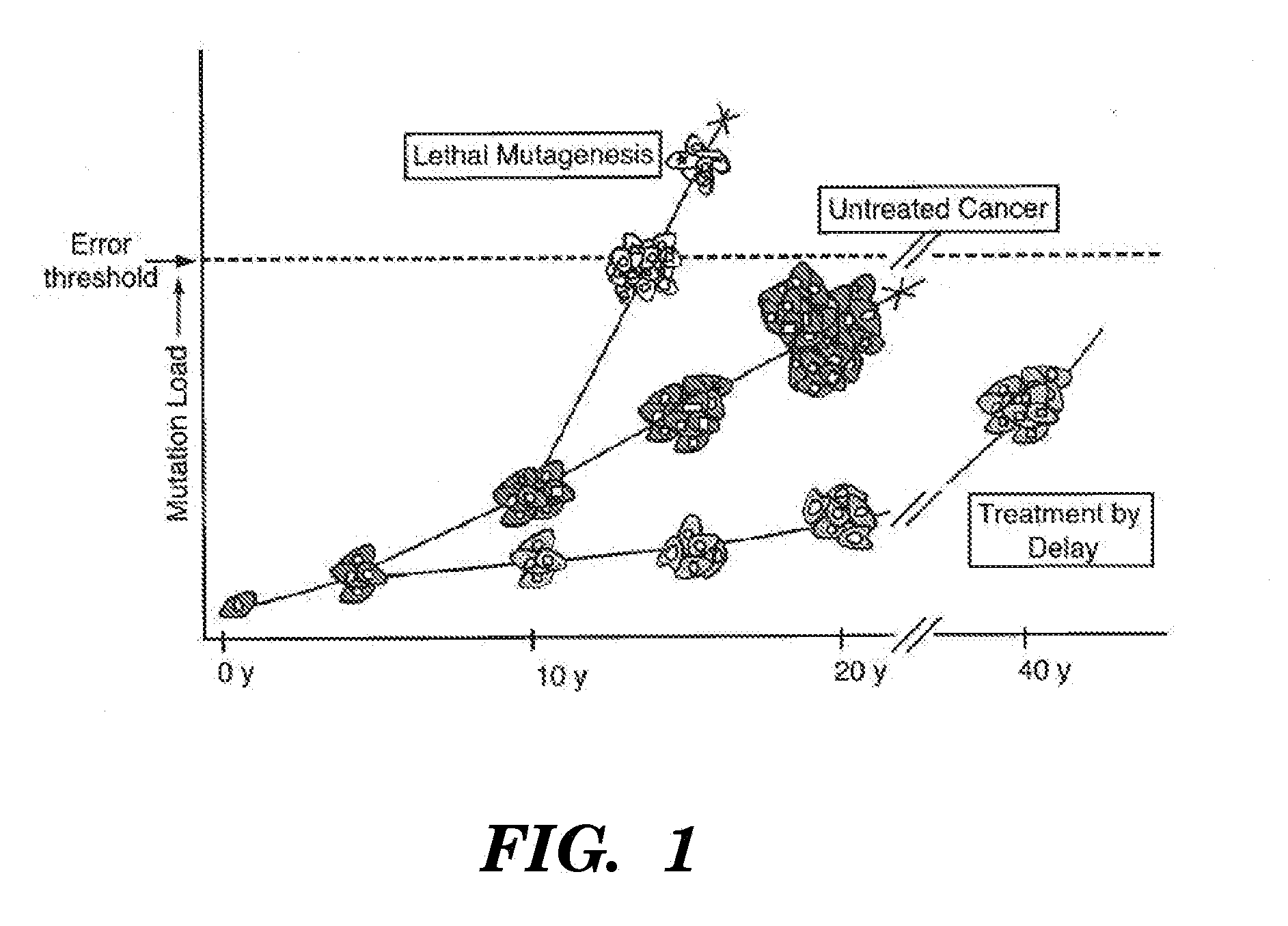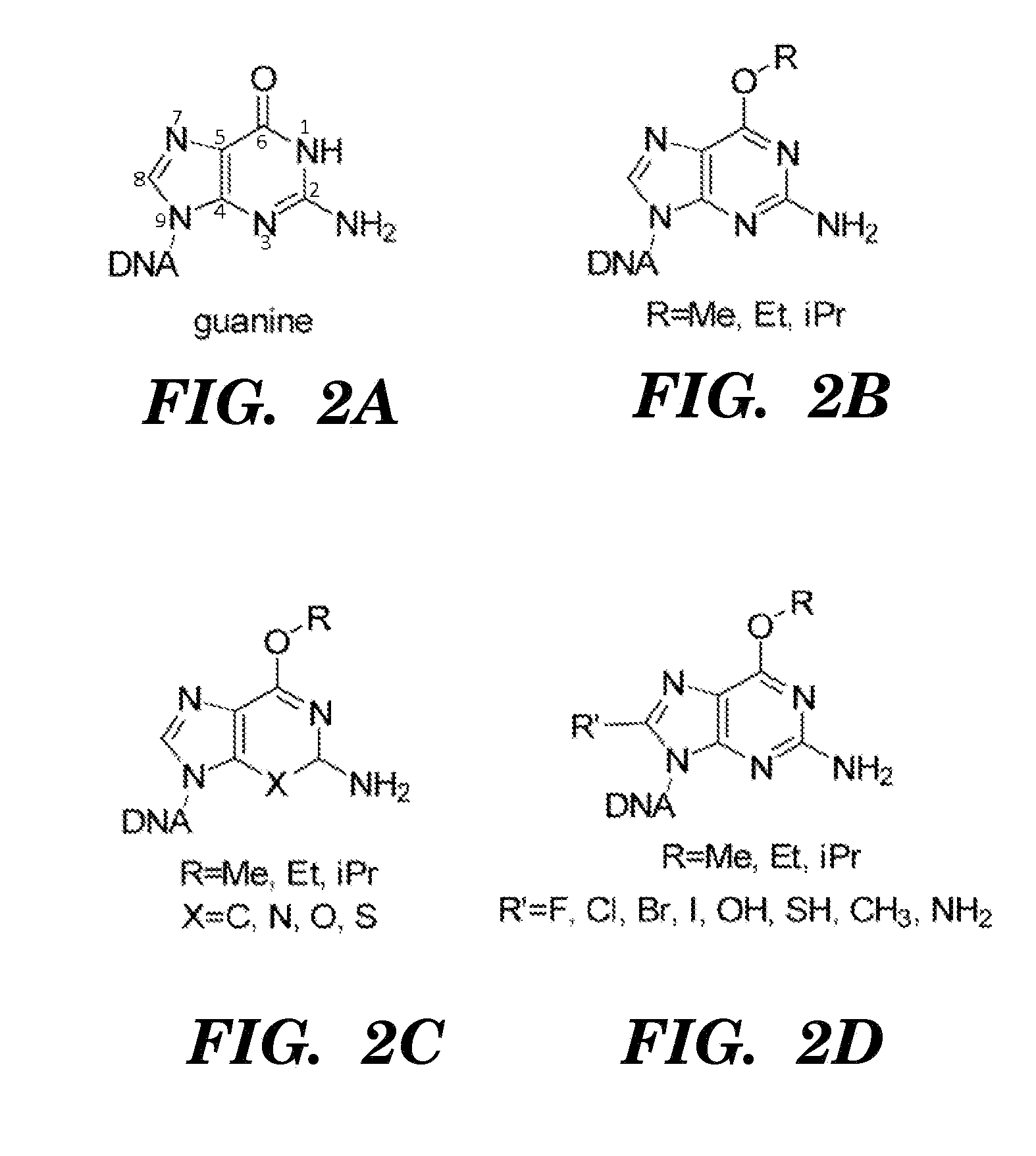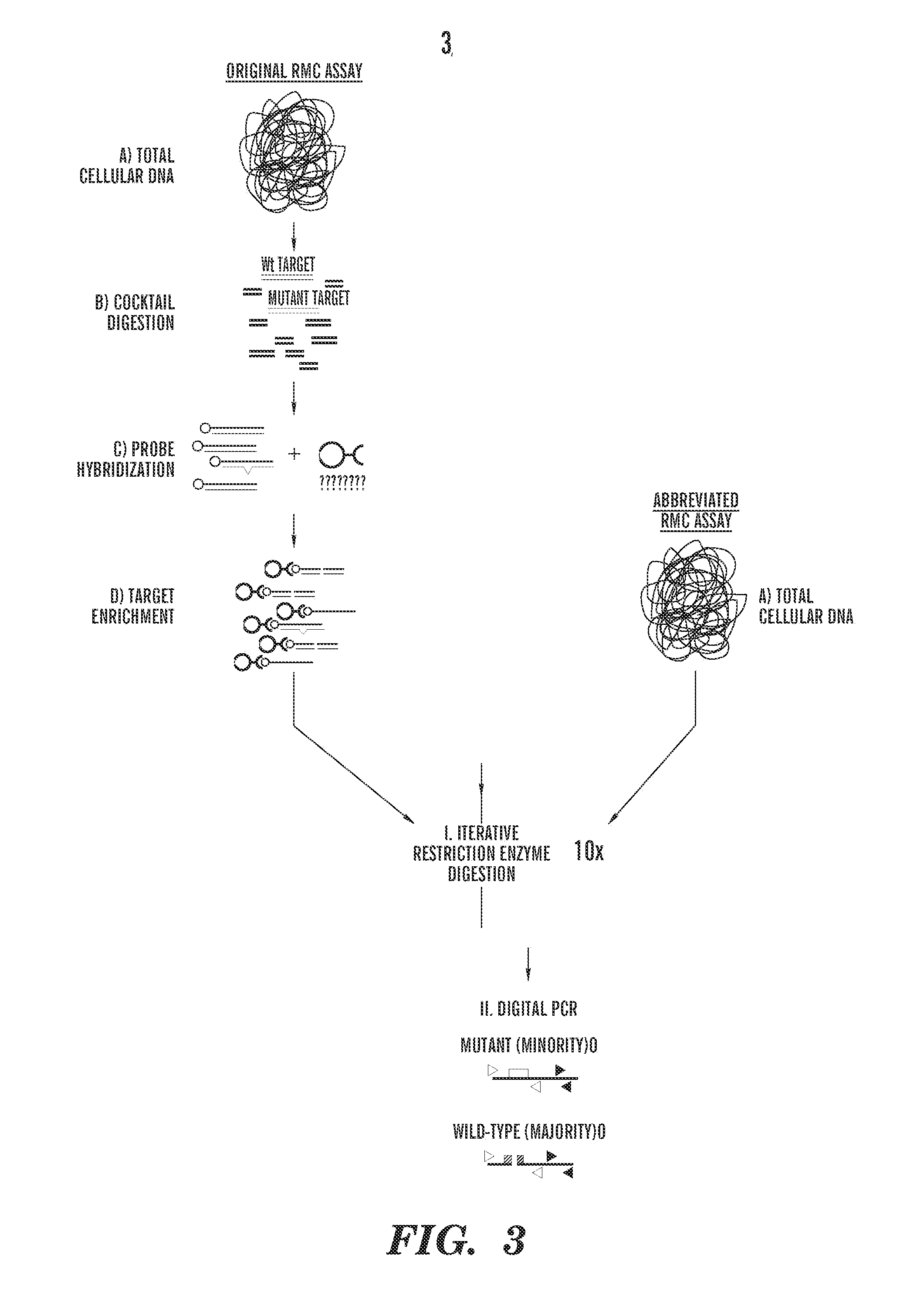Compositions and methods for treatment of cancer
a cancer and composition technology, applied in the field of cancer therapies, can solve the problems of lethal mutagenesis of cancer cells or progeny cells, and achieve the effects of reducing the viability of cancer cells, and increasing the mutation frequency of mammalian cells
- Summary
- Abstract
- Description
- Claims
- Application Information
AI Technical Summary
Benefits of technology
Problems solved by technology
Method used
Image
Examples
example 1
Selection of Mutagenic Nucleoside Analogs
[0179]Many factors have to be considered for selecting of nucleosides for the induction of lethal mutagenesis; these include an analogs capacity for ambiguous base pairing, the extent by which the substituted group inhibits phosphorylation by cellular nucleoside / nucleotide kinases and incorporation of the analog by DNA polymerases, as well as stability, solubility, availability and cost. In principle, unnatural hydrophobic nucleosides that resemble canonical nucleotides in DNA (Lu et al., 8 Org Biomol Chem. 2704 (2010); Hwang et al., 37 Nuclei Acids Res 4757 (2009); Seo et al., 131 J Am Chem Soc 3246 (2009)) with ambiguous base pairing properties could be mutagenic; however, there is a lack of evidence indicating any of these is incorporated into DNA in vivo.
[0180]One candidate mutagenic compound for assessment of its mutagenic potential is O4-methyl thymidine. The choice of O4-mT is based on the following considerations: First, O4-mT triphos...
example 2
Induction of Lethal Mutagenesis
[0183]In aspects described herein, growth of cancer cells in cultures containing mutagenic nucleoside analogs can result in the accumulation of nuclear mutations until a critical number is obtained resulting in an error catastrophe and ablation of the cell population.
[0184]A panel of nucleoside analogs is screened to identify effective mutagenic analogs, e.g., at least 10, at least 20, at least 30, at least 40, at least 50, at least 100, at least 150, at least 200 nucleoside analogs or more, can be screened using one or more, e.g., at least two, at least three, at least four, at least five or at least six different cell lines. The highest concentration of each analog at which there is no apparent toxicity is first established. Cells are monitored for analog incorporation and induced mutagenesis using the PIG-A assay. After 20 sequential transfers, the accumulation of mutations in nuclear and mitochondrial DNAs is measured using the random mutation capt...
example 3
Efficiency and Spectrum of Nucleoside Analogs
[0188]For nucleosides that induce lethal mutagenesis, it is determined if chemical modification of the analog structure can further enhance the induction of mutations. In order to select the most efficacious analog for further studies, different chemical modifications are introduced into a parent nucleoside. The corresponding nucleoside triphosphates are synthesized and the kinetics of incorporation of nucleoside triphosphate are directly measured. Rates of incorporation are determined using purified human DNA polymerase δ (Schmitt et al. 91 Biochimie 1163 (2009)). Mis-incorporation is determined using the M13 gap filling assay (Kunkel et al., 261 J Biol Chem 160 (1986); Kunkel, 279 J Bio Chem 16895 (2004)). If any of the modified nucleotides is incorporated more effectively or is more mutagenic than the parent mutagenic compound, the toxicity and serial transfer experiments described herein can be repeated, respectively.
[0189]A combinati...
PUM
| Property | Measurement | Unit |
|---|---|---|
| Time | aaaaa | aaaaa |
| Molar density | aaaaa | aaaaa |
| Molar density | aaaaa | aaaaa |
Abstract
Description
Claims
Application Information
 Login to View More
Login to View More - R&D
- Intellectual Property
- Life Sciences
- Materials
- Tech Scout
- Unparalleled Data Quality
- Higher Quality Content
- 60% Fewer Hallucinations
Browse by: Latest US Patents, China's latest patents, Technical Efficacy Thesaurus, Application Domain, Technology Topic, Popular Technical Reports.
© 2025 PatSnap. All rights reserved.Legal|Privacy policy|Modern Slavery Act Transparency Statement|Sitemap|About US| Contact US: help@patsnap.com



